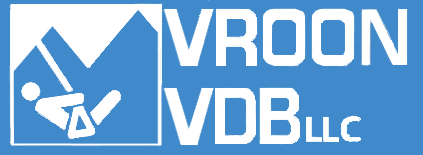Most agencies genuinely want to grow. They invest in training, assign coaches or supervisors, and talk about “continuous improvement.” But too often, these efforts don’t change much, except to drain staff energy and make people a little more skeptical of the next initiative.
It’s not because people don’t care. It’s because their systems make reactive coaching the norm instead of purposeful, connected learning. And the difference between those two approaches determines whether you ever reach, and keep, fidelity.
The Mirage of “Good Enough Coaching”
Picture this: a new staff member starts. They get trained, shadow a few sessions, and meet with a coach until everyone feels they’re “ready.” After that, coaching fades away, until something goes wrong. When there’s a crisis, a complaint, or a compliance finding, the agency scrambles to “fix it” with a refresher or another two-hour webinar.
This is reactive coaching, and it feels responsible in the moment. But it creates a deeper problem: When learning only happens for new staff or as a reaction to mistakes, it teaches everyone that learning equals deficiency.
Example: At one agency, a staff member mishandled a family conflict. Leadership quickly scheduled a mandatory training on trauma-informed care. Staff attended, but left quietly frustrated. They weren’t part of the problem, and they didn’t see how it connected to their daily work. The message landed: “Training happens when someone messes up.”
Reactive coaching doesn’t build skill or engagement, it builds resistance. When learning is only for new staff and those who make mistakes, it becomes something to avoid at all costs.
The Trap of Random Acts of Coaching
Many well-meaning coaches sense this. They see that people need more consistent learning and try to fill the gaps. They hold ad-hoc group sessions, start book clubs, or check in with staff “just to offer support.” Their intentions are excellent, but without a roadmap, everything stays disconnected.
One week they talk about engagement strategies. The next, about documentation. Then someone requests a skill refresher, so they pivot again. Without a unifying structure, these become random acts of coaching, sometimes helpful in the moment, but never cumulative.
Example: A coach at another agency started weekly team huddles to share ideas and celebrate wins. Morale improved at first, but without clear links to individual goals, supervision, or fidelity data, the energy drifted. The sessions became social check-ins rather than learning opportunities. That coach was doing everything they could, but they were coaching inside a system that had no mechanism to connect learning threads. Over time, their credibility slipped. Staff stopped showing up.
Random acts of coaching don’t fail because of a lack of effort; they fail because they’re unanchored. When new learning never leads to anything (especially anything job embedded), people learn not to spend too much energy trying to learn anything new.
What Purposeful Coaching Looks Like
Purposeful coaching is different. It’s not more coaching, it’s connected coaching. Every reflection, every learning plan, every group session is part of a coherent design aimed at helping the agency reach and maintain fidelity. Purposeful coaching turns learning from an event into an ecosystem. This allows individuals and the organization to grow together in a sustainable way.
Example: A MiiWrap coach starts with individual professional development plans that identify each staff member’s growth edges and strengths, and finds areas of overlap between they staff member’s goals and the organization’s needs. Those mutual goals shape group coaching sessions and peer learning opportunities, where staff reflect together and learn from each other’s real cases. Themes from those sessions then inform supervisory focus areas and organizational adjustments. When a new staff member joins, they’re introduced to this existing learning loop, so their onboarding becomes part of a living, evolving system.
That’s how a learning organization grows: not by adding more content, but by weaving existing efforts into one continuous learning cycle. You must build a learning culture, and consistent, purposeful coaching is how you do it.
How It All Works Together
In MiiWrap, coaching isn’t an isolated activity. It’s the architecture that holds the learning culture together. Some of the tools coaches can use to build are:
- Individual coaching and personal development to build personal mastery and resolve ambivalence.
- Group coaching to strengthen shared thinking and language, and create an expectation of group growth.
- Peer learning to deepen trust and collaboration for both peers.
- Supervision and fidelity tools to provide structure and accountability, and make sure the learning is job embedded.
Each piece reinforces the others, creating a loop of continuous learning that sustains fidelity long after external trainers leave.
Example: At one MiiWrap site, a coach noticed that her staff struggled with engaging natural supports early in cases. Instead of reacting with a quick training, she wove it into PD plans, group reflections, and new staff onboarding. Within months, natural support numbers rose, and the learning stuck, because it was embedded in the organization’s rhythm.
Coaching with Compassion and Design
If you’re a coach in a system that runs on random acts of learning, you’re probably exhausted. You see what’s possible, but you don’t have the structure, or authority, to make it happen. You’re not wrong. The system is working against you. The good news: there’s another way.
When agencies invest in developing skilled, intentional internal coaches and give them the tools to connect learning across levels, everything changes. Staff stop resisting learning because it feels meaningful. Supervisors become part of the growth process instead of compliance monitors.
And fidelity stops being something you “work toward.” It becomes who you are.
The Takeaway
You can’t train your way to fidelity. You coach your way there, on purpose, within a system designed for learning. Random acts of coaching build confusion. Purposeful coaching builds culture. In MiiWrap, our coaches are trained to do more than support learning. They build the systems that make learning sustainable, so fidelity doesn’t depend on who’s in the room, but on the culture that remains when they leave.

